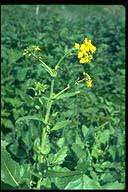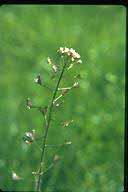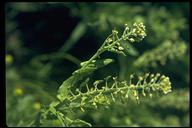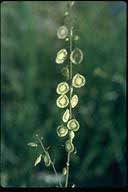Dicotyledon Genera Descriptions
How To Use The Descriptions For Further Research
You may research other species listed by selecting the italicized links.You can press each picture to see where it is credited to and, in many cases, to see other pictures of the species.
You can also check out other information that I have included under each picture.
Cruciferae - Mustard Family
Winter-cress
Leaves may be eaten after boiling (which removes the bitter after-taste).
Field Mustard
Young leaves can be steamed, used as a potherb or eaten raw. Avoid the seeds.
Shepherd's-purse
The young plants are edible raw, but are better cooked and contain ascorbic acid. Collect the seeds before they mature. Seeds should be parched and eaten or ground into flour.
Bitter-cress
Cardamine bellidifolia var pachyphylla,
C. breweri,
C. lyallii,
C. pennsylvanica
The plant may be eaten raw, but is better when cooked.
Toothwort
Cardamine
Dentaria californica, D. pachystigma, D. tenella var. palmata
The peppery tasting rootstock can be eaten raw or in salads.
Pepper Grass
Lepidium densiflorum, L. perfoliatum, L. virginicum var. pubescens
Young stems and leaves may be eaten raw or dried for future use. The seeds can replace pepper on meat and in soups. This plant is high in vitamin C.
Fringe Pod
Seeds may be parched and eaten or ground and mixed with flour.
Back To Family List /
Back To Dichotomous Key /
Main Plant Index







